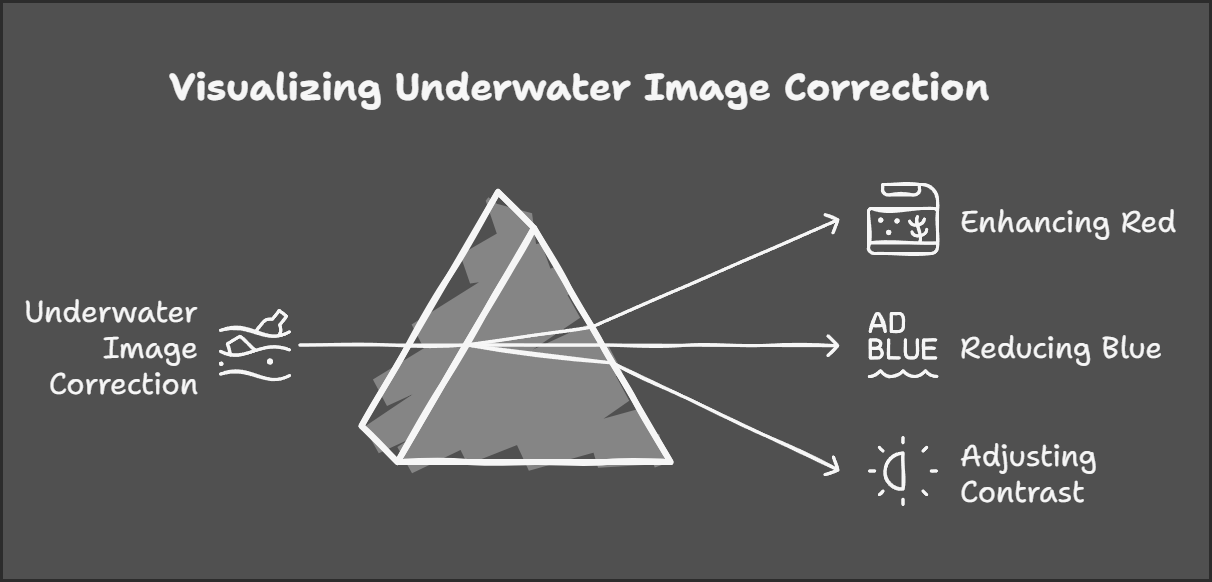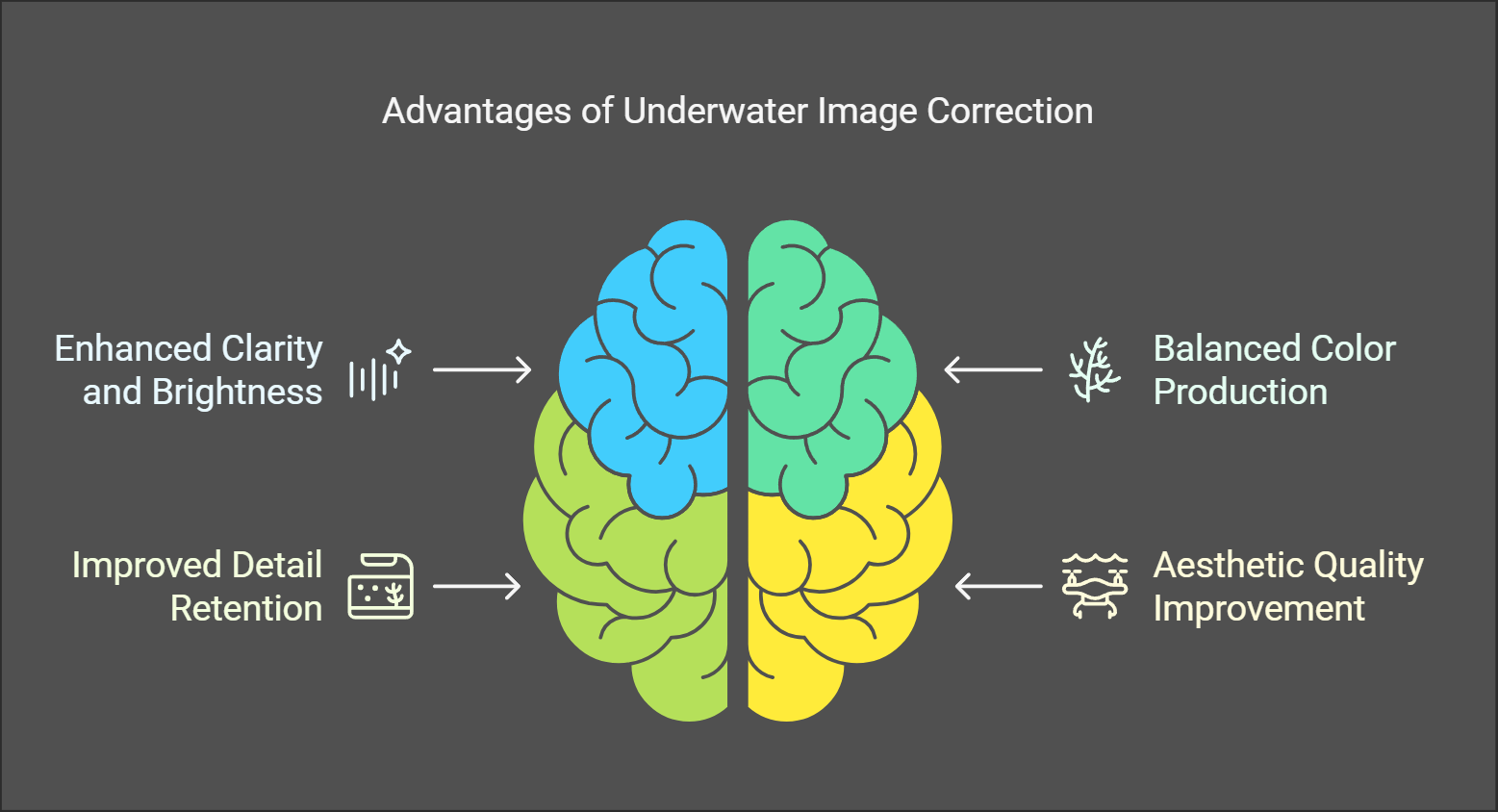Underwater Image Correction Algorithm Explained
This page provides a comprehensive overview of our underwater image correction algorithm, designed to enhance colors and improve contrast in submerged images. Our method makes underwater scenes more vibrant and clear, ensuring a better visual experience.
How the Algorithm Works
The algorithm operates by analyzing and adjusting individual color channels of an image in a multi-step process:
- Enhancing Red: Boosts the red channel to offset the loss of warmth typically seen underwater.
- Reducing Blue: Decreases the intensity of the blue channel to prevent oversaturation.
- Adjusting Contrast: Applies a linear transformation to RGB channels to balance light and dark areas.

Each pixel is precisely processed to ensure that the final output maintains natural details while being visually enhanced.
Benefits of Underwater Image Correction
Implementing this algorithm offers several advantages:
- Enhanced clarity and brightness in underwater images.
- Balanced color production that reflects true natural conditions.
- Improved detail retention, even in deep or murky water.
- Better overall aesthetic quality which boosts user engagement.

Technical Details
The underlying process involves iterating over an array of pixel data. Key steps include:
- Scaling the red channel values.
- Reducing the blue channel values.
- Applying contrast enhancement uniformly on the RGB channels.
This systematic approach ensures that even in challenging underwater environments, the image quality is significantly improved.